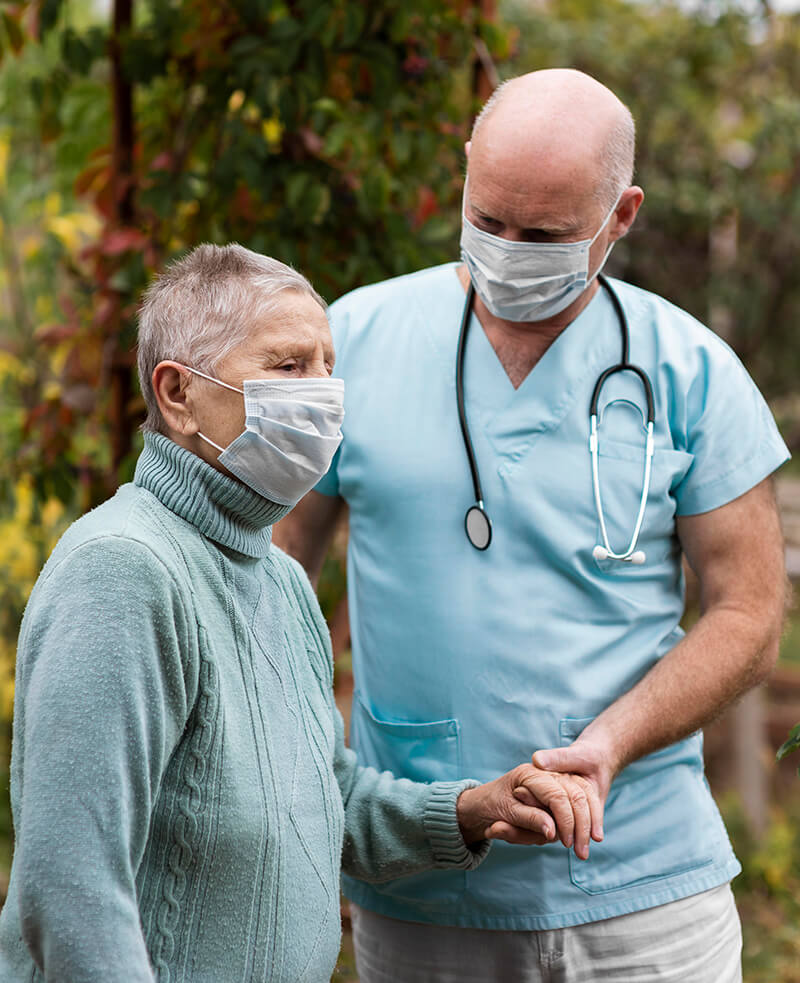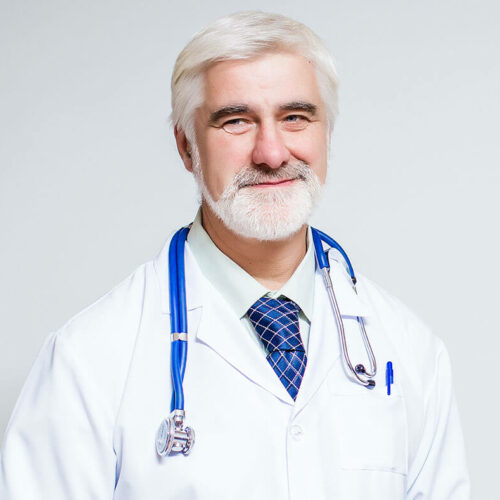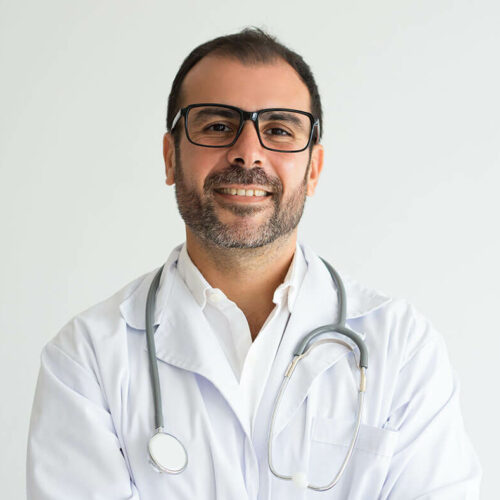
何国元医生
“并非所有慢性疼痛患者都需要手术。 微创治疗也可以有效地缓解疼痛。"
何国元医生是疼痛医学界举世皆知的专科医生,他已经进行过数千例微创介入性疼痛手术。他使用类固醇注射、神经阻滞、射频消融手术、脊髓内药物输送和脊髓刺激等疗法治疗持续性和严重性疼痛。
他是亚洲第一位采用冷却射频消融技术(Cooled Radiofrequency Ablation) 的医生。自2006年以来,他一直使用这种技术治疗脊柱、骶髂关节、髋、膝和肩疼痛。他还为晚期癌症患者进行脊髓内药物输注,以确保他们在生命的最后时光中享受无痛苦的舒适护理。
当波士顿科学公司(Boston Scientific) 在东南亚推出其最先进的脊髓刺激系统 WaveWriter Alpha™ 时,何国元医生是东南亚第一位为病患做植入手术的医生。SCS使用电脉冲来阻止脊髓中的疼痛信号,有效地治疗难治性背痛、腿痛和神经痛。脊髓刺激疗法已经帮助全世界数以千计的人,改善了他们的生活质量。
何国元医生在新加坡国立大学获得了医学学士学位和医学硕士学位(麻醉学)。他持有南洋理工大学李光前医学院(LKCMed)的运动医学研究生文凭(GDSM)。
他于2006年在美国杜克大学医院完成了疼痛管理的培训。他是美国疼痛管理学院(DAAPM)认证的院士和世界疼痛学院的介入性疼痛治疗院士(FIPP)。何医生拥有双重欧洲资格,曾分别获得欧洲疼痛医学文凭(EDPM),由欧洲EFIC联合会和欧洲区域麻醉学会颁授。他是FIPP考试和ESRA-EDPM考试的考官。
何国元医生曾担任新加坡中央医院麻醉部以及疼痛管理中心的顾问。
履历
媒体
何国元医生曾出现在本地电视节目(Channel NewsAsia,Mediacorp Channel 5 TV Prime Time Morning 和 Channel 8早安你好),也在海外电视节目(雅加达Metro TV)上露面。
他曾在News FM93.8 Body and Soul,Capital FM95.8,Love FM97.2和UFM100.3的英语和华语广播脱口秀中接受过多次关于慢性疼痛的采访。此外,他还在本地报纸(海峡时报,联合早报,新明日报和联合晚报)和海外报纸(婆罗洲邮报,星洲日报和南洋商报)上分享疼痛医疗的知识。
在业余时间,何医生为海峡时报和联合早报撰写文章。他也是《晚报》的常驻专栏作家(2015年至2017年)。何医生已经发表了50多篇同行评审的研究论文和书籍章节,涉及疼痛管理和麻醉相关的主题。他已经在区域和国际医学会议、讲座和培训课程里做了超过250次的发表演讲。
2. Ho KY, Chiu JW. Fast-track anaesthesia for day-case surgery: What are the issues? Asean Journal of Anaesthesiology 2003; 4(1): 14-36.
3. Ho KY, Chua WL, Lim SST, Ng ASB. A comparison between single and double breath vital capacity inhalation induction with 8% sevoflurane in children. Paediatr Anaesth 2004 Jun; 14(6): 457-61.
4. Ho KY, Chiu JW. Multimodal antiemetic therapy and emetic risk-profiling. Ann Acad Med Singapore 2005 May; 34(2): 196-205.
5. Ho KY, Gan TJ. The impact of intraoperative analgesia on the prevention of chronic postoperative pain. COPE (Coalition for Pain Education Newsletter) 2006; 1(1): 5.
6. Ho KY, Gan TJ. Book review on: The Year in Anesthesia and Critical Care, Vol. 1. By Hunter J, Cook T, Priebe H-J, Struys M, eds. Oxford, UK: Clinical Publishing, 2005. Anesth Analg 2006; 102: 1300-1.
7. Ho KY. Vascular uptake of contrast despite negative aspiration in interlaminar cervical epidural injection. Pain Physician 2006 Jul; 9(3): 267-268.
8. Ho KY. Gabapentin for postoperative nausea and vomiting prophylaxis. J Postgrad Medicine 2006 Jul-Sep; 52(3): 230.
9. Ho KY, Gan TJ. Chapter 39: Postoperative Nausea and Vomiting. In: Complications in Anesthesiology, 3rd edition. Editors: Lobato EB, Gravenstein N, Kirby RR. Lippincott Williams & Wilkins; Philadelphia, PA. 2007. Page 571-580.
10. Ho KY, Nagi PA, Gray L, Huh BK. An alternative approach to ganglion impar neurolysis under computed tomography guidance for recurrent vulva cancer. Anesthesiology 2006 Oct; 105(4): 861-862.
11. Ho KY, Gan TJ, Habib AS. Gabapentin and postoperative pain – a systematic review of randomized controlled trials. Pain 2006 Dec; 126(1-3): 91-101.
12. Ho KY, Gan TJ. Pharmacology, pharmacogenetics, and clinical efficacy of 5-hydroxytryptamine type 3 receptor antagonists for postoperative nausea and vomiting. Curr Opin Anaesthesiol 2006 Dec; 19(6): 606-611.
13. Lim Y, Sia AT, Ho KY, Teo A. Combined spinal epidural analgesia for labor with and without 3 ml of 1.5 % epidural lidocaine. Med Sci Monit Jan 2007; 13(1): CR9-13.
14. Huerto A, Ho KY. Interventional management of cancer pain. SGH Proceedings 2007; 16(1): 4-11.
15. Ho KY, Gan TJ. Management of persistent post-dural puncture headache after repeated epidural blood patch: case report. Acta Anaesthesiol Scand 2007 May; 51(5): 633-636.
16. Ho KY, Tan KH. Botulinum toxin A for myofascial trigger point injection: a qualitative systematic review. Eur J Pain 2007 Jul; 11(5): 519-527.
17. Huerto APS, Yeo SN, Ho KY. Piriformis muscle injection using ultrasonography and motor stimulation – report of a technique. Pain Physician 2007 Sep; 10(5): 687-690.
18. Ho KY, Huh BK, White WD, Yeh CC, Miller EJ. Topical amitriptyline versus lidocaine in the treatment of neuropathic pain. Clin J Pain 2008 Jan; 24(1): 51-55.
19. Dooley JD, Beadles C, Ho KY, Sair F, Gray-Leithe L, Huh BK. Computed tomography-guided bilateral transdiscal superior hypogastric plexus neurolysis. Pain Medicine 2008 April; 9(3): 345-347.
20. Ho KY, Manghnani P. Acute monoplegia after lysis of epidural adhesions: A case report. Pain Practice 2008 Aug; 8(5): 404-407.
21. Nocom G, Ho KY, Perumal M. Interventional management of chronic pain. Ann Acad Med Singapore 2009 Feb; 38(2): 150-155.
22. Ho KY, Pasutharnchat K. Intrathecal dexamethasone for the treatment of intractable postherpetic neuralgia: a case report. The Internet Journal of Pain, Symptom Control and Palliative Care 2009;6(2).
23. Ho KY, Gan TJ. Chapter 25: Opioid-Related Adverse Effects and Treatment Options. In: Acute Pain Management. Editors: Sinatra R, De Leon-Casasola O, Viscusi E, Ginsberg B. Cambridge University Press; New York, NY. 2009. Page 406-415.
24. Ho KY, Jones L, Gan TJ. The effect of cultural background on the usage of complementary and alternative medicine for chronic pain management. Pain Physician 2009 May-Jun; 12(3): 685-8.
25. Poon KH, Tan KH, Ho KY. Efficacy of fentanyl iontophoretic transdermal system in postoperative pain - a meta-analysis. Acute Pain 2009 June; 11(2): 65-74.
26. Ho KY, Siew CW. A survey of chronic pain management by primary care physicians in Singapore. Asean Journal of Anaesthesiology 2009.
27. Ho KY, Siau C. Chronic pain management: therapy, drugs and needles. Ann Acad Med Singapore 2009 Nov; 38(11): 929-930.
28. Pasutharnchat K, Tan KH, Hadi MA, Ho KY. Intrathecal analgesia in patients with cancer pain – an audit in a tertiary institution. Ann Acad Med Singapore 2009 Nov; 38(11): 943-946.
29. Tay W, Ho KY. The role of interventional therapies in cancer pain management. Ann Acad Med Singapore 2009 Nov; 38(11): 989-997.
30. Ho KY, Tay W, Yeo MC, Liu HJ, Yeo SJ, Chia SL, Lo NN. Duloxetine reduces morphine requirements after knee replacement surgery. Br J Anaesth 2010 Sep; 105(3): 371-376.
31. Pasutharnchat K, Ho KY. Spinal cord stimulation for the treatment of intractable pain from failed back surgery syndrome. Proceedings of Singapore Healthcare 2010; 19(3): 3-7.
32. Emril D, Ho KY. Treatment of trigeminal neuralgia – role of radiofrequency ablation. J Pain Res 2010 Dec; 3: 249-254.
33. Zhang J, Ho KY, Wang Y. Efficacy of pregabalin in acute postoperative pain: a meta-analysis. Br J Anaesth 2011 Apr; 106(4): 454-462.
34. Tan M, Tan BS, Wee CN, Yang JM, Ho KY, Ong S. A Randomised Controlled Trial Evaluating the Efficacy of a Nurse Controlled Analgesia (NCA) Protocol in Post Anaesthesia Care Unit (PACU). Proceedings of Singapore Healthcare 2011 Jun; 20(2):110-114.
35. Yuan FSY, Ng SY, Ho KY, Lee SY, Chung AYF, Poopalalingam P. Abnormal coagulation profile after hepatic resection: the effect of chronic hepatic disease and implications for epidural analgesia. J Clin Anesth 2012; 24:398-403.
36. Macleod DB, Habib AS, Ikeda K, Spyker DA, Cassella JV, Ho KY, Gan TJ. Inhaled fentanyl aerosol in healthy volunteers: pharmacokinetics and pharmacodynamics. Anesth Analg 2012 Nov;115(5):1071-1077.
37. Ho KY, Chua NHL, George JM, Yeo SN, Main N, Choo CY, Tan JWT, Tan KH, Ng BY. Evidence-based guidelines on the use of opioids in chronic non-cancer pain – a consensus statement by the Pain Association of Singapore Task Force. Ann Acad Med Singapore 2013 Mar;42(3):138-152.
38. Ho KY, Hadi MA, Pasutharnchat K, Tan KH. Cooled radiofrequency denervation for the treatment of sacroiliac joint pain: Two-year results from twenty cases. J Pain Res 2013 Jul 4;6: 505-11.
39. Pergolizzi JV, Gharibo C, Ho KY. Treatment considerations for cancer pain: a global perspective. Pain Pract 2015; 15(8):778-792.
40. The ACHEON Working Group, Kim YC, Ahn JS, Calimag MMP, Chao TC, Ho KY, Tho LM, Xia ZJ, Ward L, Moon H, Bhagat A. Current practices in cancer pain management in Asia: a survey of patients and physicians across ten countries. Cancer Med 2015 Aug;4(8):1196-1204.
41. Ho KY, Ahn JS, Calimag MM, Chao TC, Kim YC, Moon H, Tho LM, Xia ZJ, You D. Inadequate treatment practices for pain relief and adverse event management in cancer patients across 10 countries/regions in Asia: a call for greater efforts to improve standards for patient care. Asia Pac J Clin Oncol 2018 Jun;14(3)159-166.
42. Ho KY, Gwee KA, Cheng YK, Yoon KH, Hee HT, Omar AR. Nonsteroidal anti-inflammatory drugs in chronic pain: implications of new data for clinical practice. J Pain Res 2018;11:1937-1948.
43. Freynhagen R, Arevalo Parada H, Calderon-Ospina CA, Chen J, Rakhmawati Emril D, Villacorta FF, Franco H, Ho KY, Lara-Solares A, Li CC, Mimenza Alvarado A, Nimmaanrat S, Dolma Santos M, Ciampi de Andrade D. Current understanding of the mixed pain concept: a brief narrative review. Curr Med Res Opin. 2019;35(6):1011-1018.
44. Raff M, Belbachir A, El-Tallawy S, Ho KY, Nagtalon E, Salti A, Seo JH, Tantri AR, Wang HW, Wang TL, Buemio KC, Gutierrez C, Hadijat Y. Intravenous Oxycodone Versus Other Intravenous Strong Opioids for Acute Postoperative Pain Control: A Systematic Review of Randomized Controlled Trials. Pain Ther 2019;8(1):19-39.
45. Ho KY. Perceptions and Beliefs Regarding NSAIDs in the Asia-Pacific Region. J Pain Res 2020; 13:437-446.
46. Huang RY, Poree L, Ho KY, Tsai SY, Liu YC, Tan PH, Wen YR. Behavioral Survey of Effects of Pulsed Radiofrequency on Neuropathic and Nociceptive Pain in Rats: Treatment Profile and Device Implantation. Neuromodulation 2021;24(8):1458-1466. DOI: 10.1111/ner.13169
47. Ho KY, Cardosa MS, Chaiamnuay S, Ho HQT, Kamil O, Mokhtar SA, Nakata K, Navarra SV, Nguyen VH, Pinzon R, Tsuruoka S, Yim HB, Choy E. Practice advisory on the appropriate use of NSAIDs in primary care. J Pain Res 2020; 13:1925-1939. DOI: 10.2147/JPR.S247781.
48. Ho KY, Wang EH, Salud JA, Cheung CW, Chong KW. Real-world experience with tramadol plus dexketoprofen fixed-dose combination in postoperative pain management: A series of case studies from Asia. Clin Case Rep Rev 2020;6:1-7. DOI:10.15761/CCRR.1000493.
Breakthrough in Comprehensive, Flexible Care Delivery Models

Optimize Your Health Care Services

Boost Employee Engagement

Accelerate Your Return on Investment
Meet Our Experience
Team Members

Flexible & Responsive to Changing Needs
Our patients come from all over the world — and so do our staff members. They come to be part of a professional and diverse health care team; to work beside the unequaled talent of Medibo physicians, nurses and providers; and to enjoy extensive benefits and opportunities for personal and professional growth.






